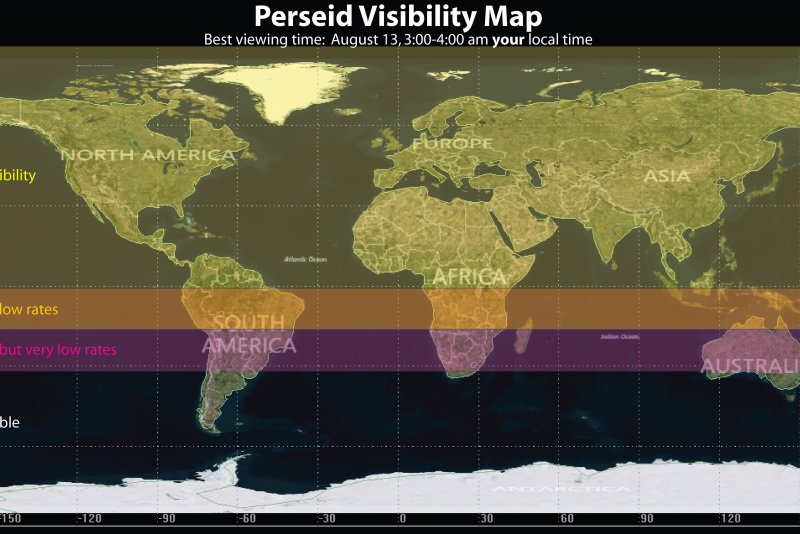WASHINGTON, Aug. 12 (UPI) -- The Perseid meteor shower began over the weekend, but for those with normal sleep schedules a glimpse of the shooting stars has been hard to come by. The glow of the extra-large moon -- now waning in the wake of Sunday's supermoon -- continues to bathe the night sky in star-drowning light, making small shooting stars invisible and large ones exceedingly difficult to pick out.
"This is bad news for the Perseids," Bill Cooke, astronomer at NASA's Meteoroid Environment Office, recently said of the supermoon's presence. "Lunar glare wipes out the black-velvety backdrop required to see faint meteors, and sharply reduces counts."















